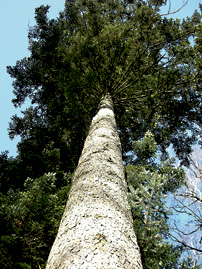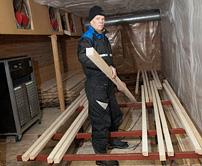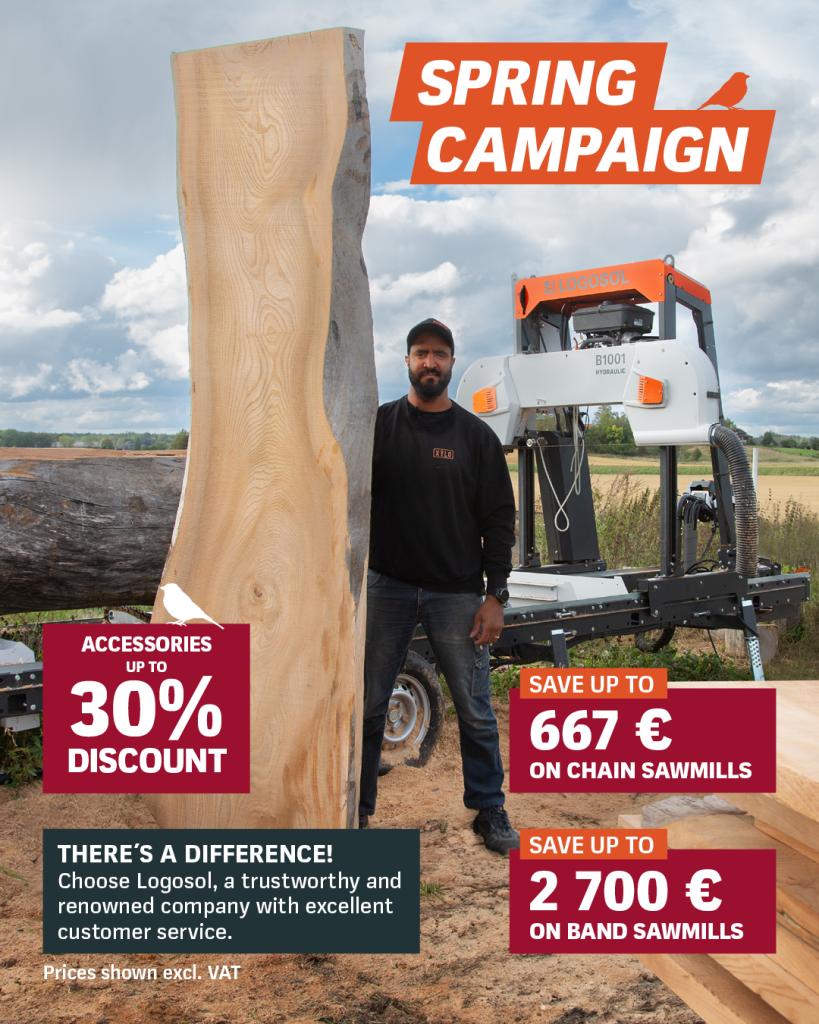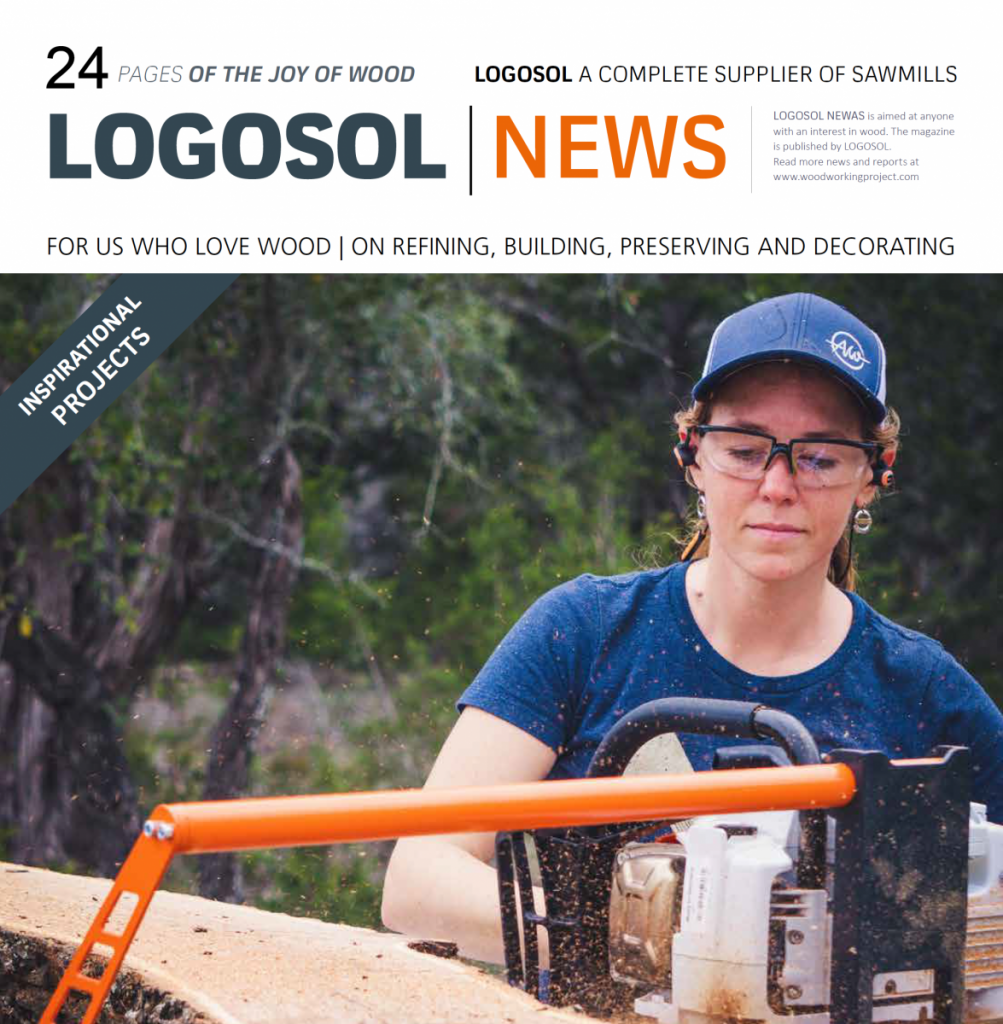When you purchase knives from Logosol for your planing machine or moulder, you will get the added benefit of easier installation.
”All knives have the same base, which means that you don’t have to change the setting when changing knife,” says Martin Lindqvist at Toolbox.
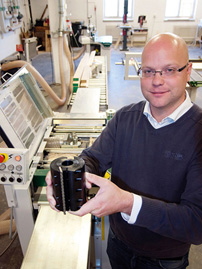
Martin Lindqvist , Toolbox.
Toolbox has produced knives for Logosol ever since the first three-sided planer was launched almost 15 years ago. The company has leading knowledge on knives and other tools used for woodwork. What is what, and what is good for what? Martin Lindqvist helps to sort out the terms.
Different type of knife
Tool (high carbon)
steel or carbon steel Often used in industrial planers and to grind profiles. The knife wears relatively quickly, but is easy to sharpen. Starts out sharper than other types of knife, but the sharpness is lost quickly.
HSS, also called high speed steel
The name relates to an alloy that maintains sharpness for longer. The hardness makes it more difficult to grind profiles with good results. Therefore, Logosol’s moulding knife is produced using a method called Electrical Discharge Monitoring (EDM).
Hard metal
An alloy of several metals including tungsten carbide and cobalt as the main ingredients. Extremely hard, but also extremely brittle. Stays sharp for longer, but is difficult to sharpen. The brittleness means that the knife can break if you drop it, or run into a tough branch.
Better than the industry
”Logosol’s standard knife is produced using HSS and is also available in hard metal,” says Martin.
At the same time
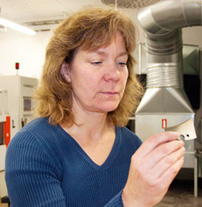
Maria Linder checks some knives after EDM. The entire process is extremely precise and fully computer controlled.
he shatters the widely held understanding that big industry uses different, better knives. The same steel is used for both. If there is any difference it is that the small-scale planers are of better quality, to avoid having to sharpen them so often.
For softer woods such as spruce and pine, HSS is the best alternative. Hard metal is an option for planing and processing large quantities of harder woods, mainly oak in Sweden. The next mystery is the TB90 and groove knives. TB means Toolbox and is the most common type of cutter for planers and moulders.
The same every time
The knife is held in place with pins and a wedge. This means that the knife ends up in exactly the right place every time. Since Toolbox uses the same base for all knives, the knife can be changed without having to change the machine settings.
The TB90 cutter has now gained a bigger cousin, the TB92. This is 120 mm high and handles knives of up to 130 mm. This has been developed for the new Logosol PH360, but also fits the PH260. Knives for the TB90 cutter are available in two thicknesses, 4 and 5.5 millimetres. The thicker knife allows a four millimetre greater protrusion, 25 mm instead of 21.
Bigger protrusions require thicker knives and a different type of cutter. Here, the knife is held in place using grooves, hence the name groove knife. The thickest groove cutter knife from Toolbox is eight millimetres. The delicacy using the same base however, is lost. All Logosol knives are produced individually, both standard and special, using EDM.
”The quality is exactly the same for standard knives and special knives,” says Martin.
30 per cent of knives are specially produced according to the customer’s specifications. All CAS-directions are saved. If the customer orders any more knives, these will be exactly the same as the old ones.

